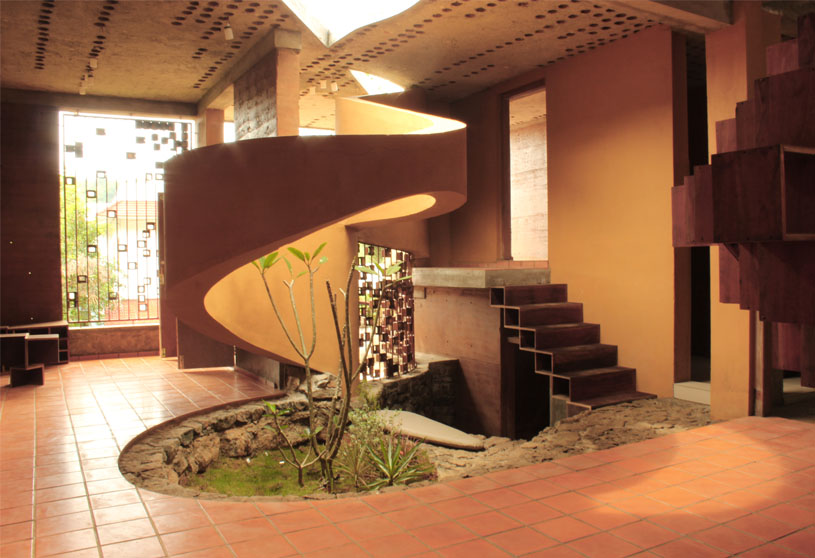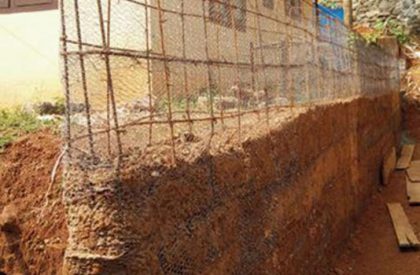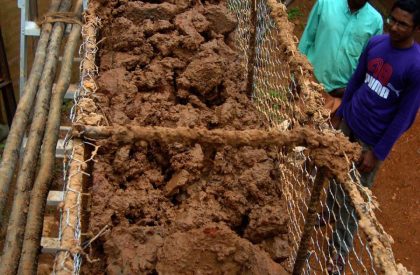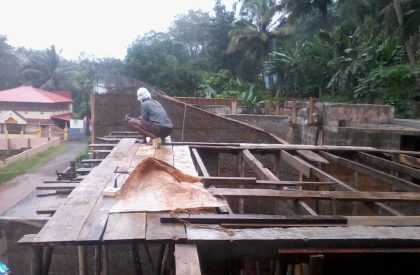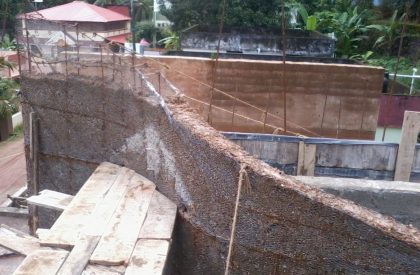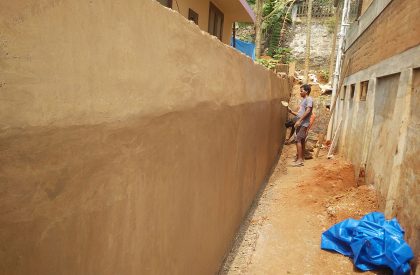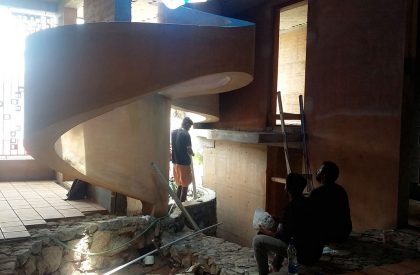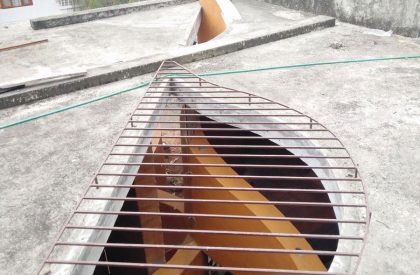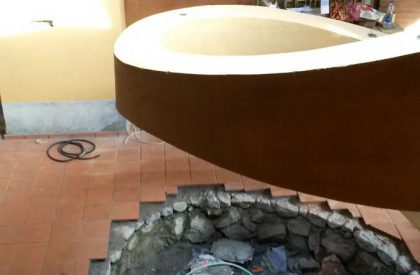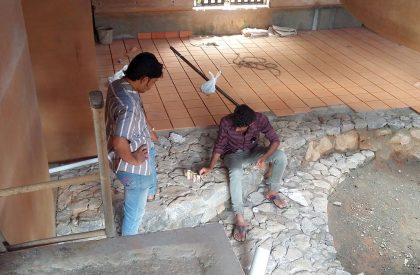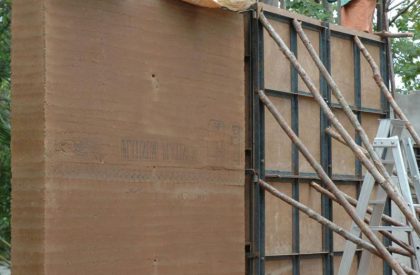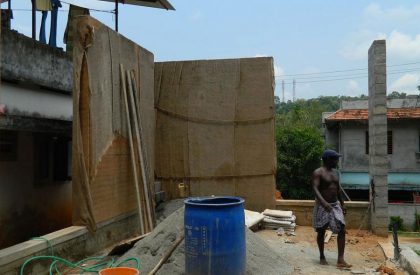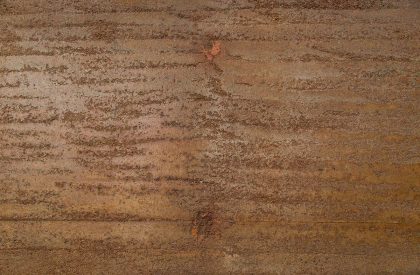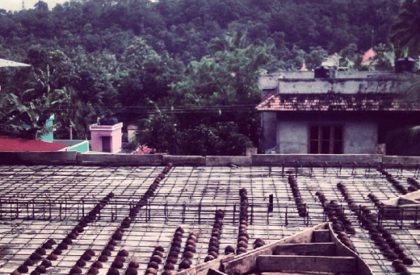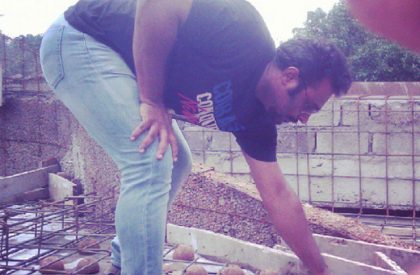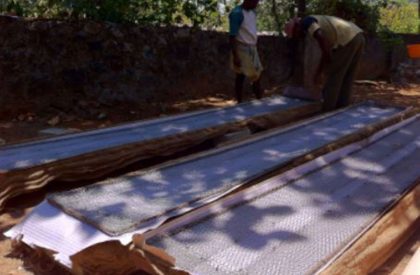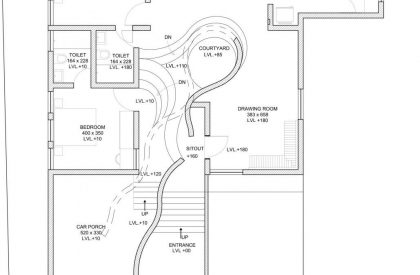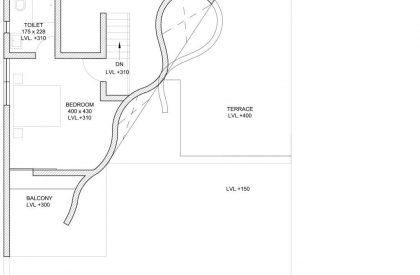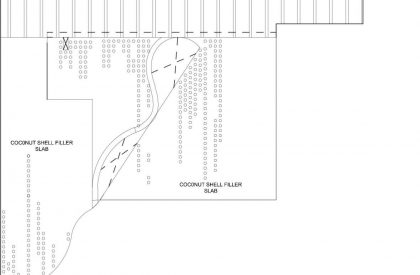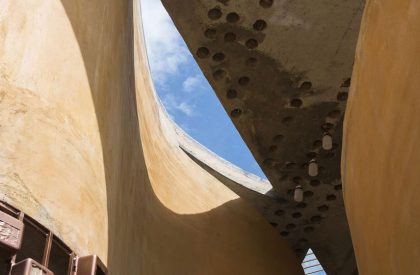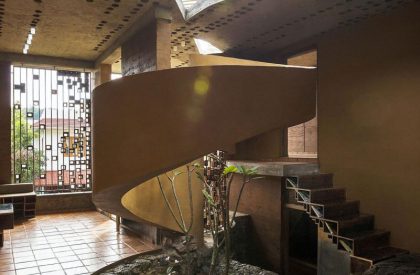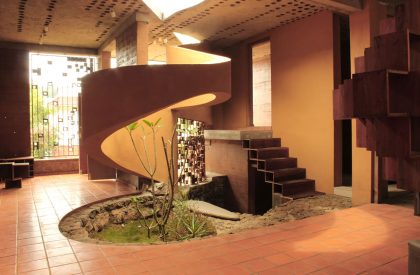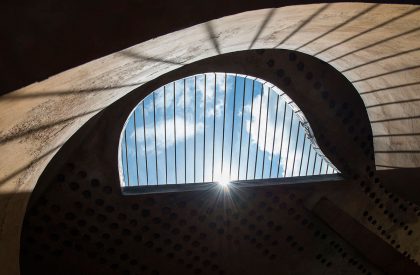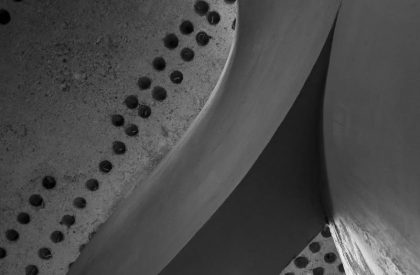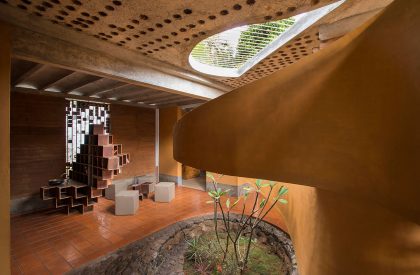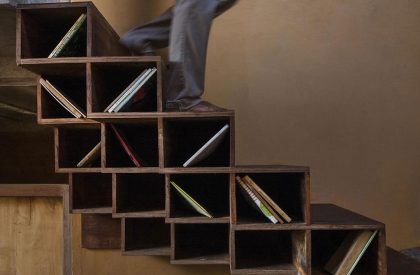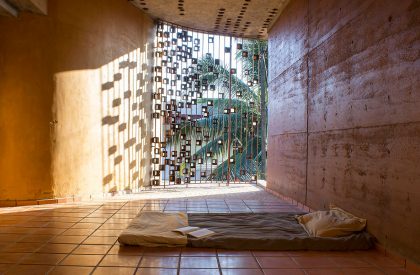Excerpt: Debris House – Residence for Mr. Biju Mathew, designed by Wallmakers, employs recycled and eco-sensitive materials in its making with much care all the while ensuring that the material limitations are overcome and an expressive architecture is allowed to emerge from the constraints. The levels of the site are explored for connections within and the house maintains a scale with sensitivity towards the neighbourhood. Looking at the local context, the project strikes out, humbly maintaining its commitment to the society and the environment.
Project Description
[Text as submitted by architect] Nestled in a quaint township, is this rammed earth residence for a family of six. The site was at a slope with remnants of many demolished buildings. Maximizing the given area the building is set in multiple levels to accommodate the family and to meet the client’s dreams in the most feasible way. There is a lot of potential in dealing with small urban and sub-urban homes for clients who approach architects with limited budgets and elaborate programs. Houses are aspirational investments for many in developing sub-urban landscape of India sometimes demanding a lifetime of savings from the clients. Very different from weekend homes, these houses have become prototypes in themselves and act as pivots for the life of the inhabitants.
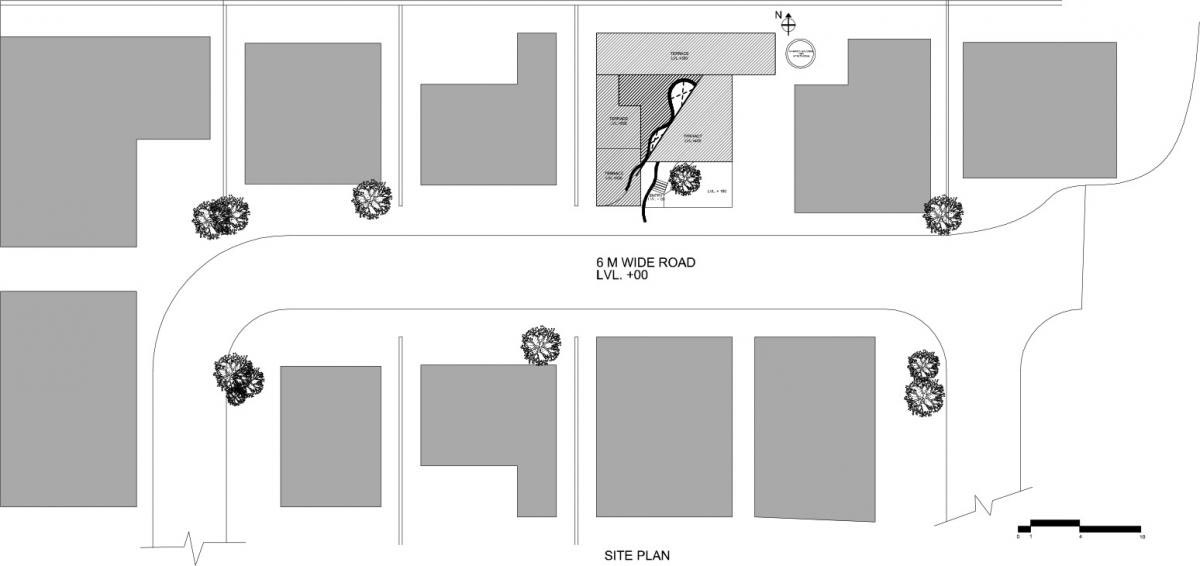

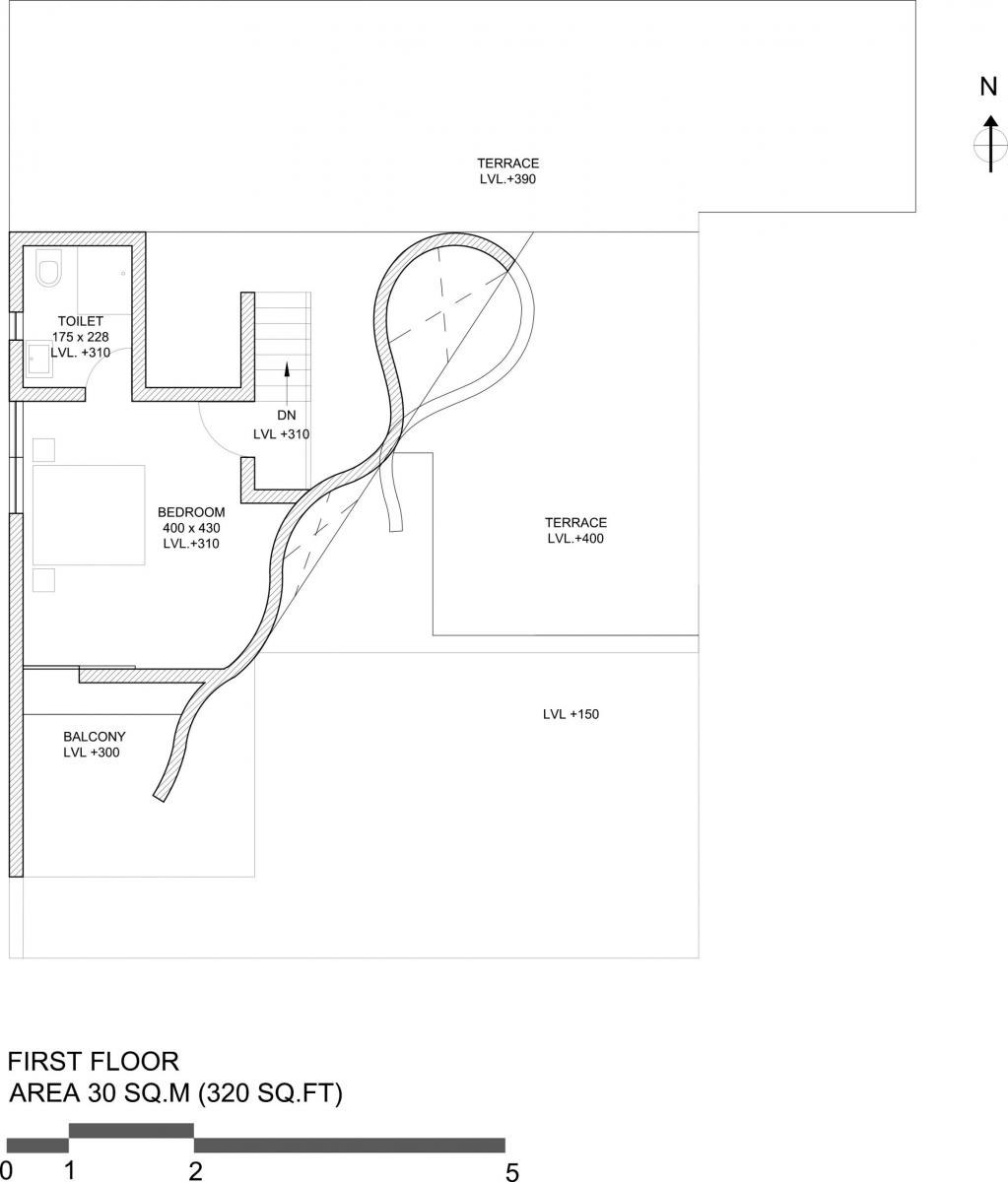

This house employs recycled and eco-sensitive materials in its making with much care all the while ensuring that the material limitations are overcome and an expressive architecture is allowed to emerge from the constraints. The Debris wall is built over a discovered foundation and with materials that are recycled from the site. The coconut shell filler slab enables the architect to reduce concrete in the same. While the house uses numerous alternate technologies, there is a certain whimsy and playfulness in its design. The small court ensures ventilation and the windows made from scrap but with a certain careful detailing. The levels of the site are explored for connections within and the house maintains a scale with sensitivity towards the neighbourhood.
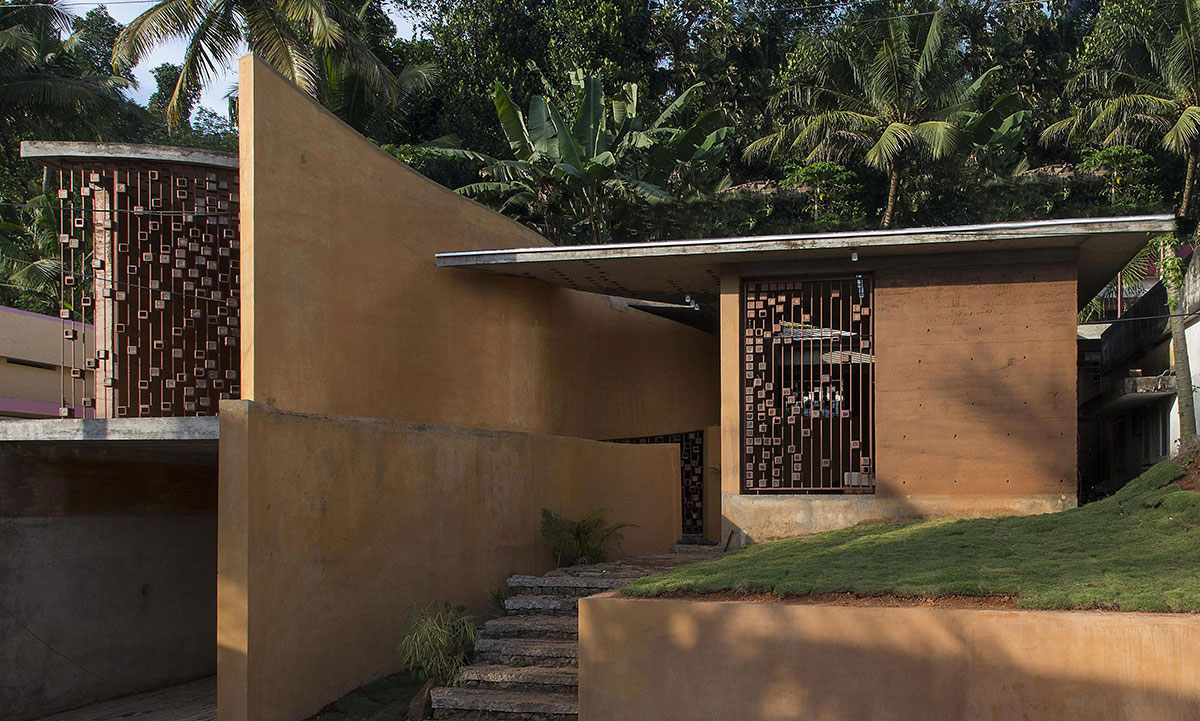
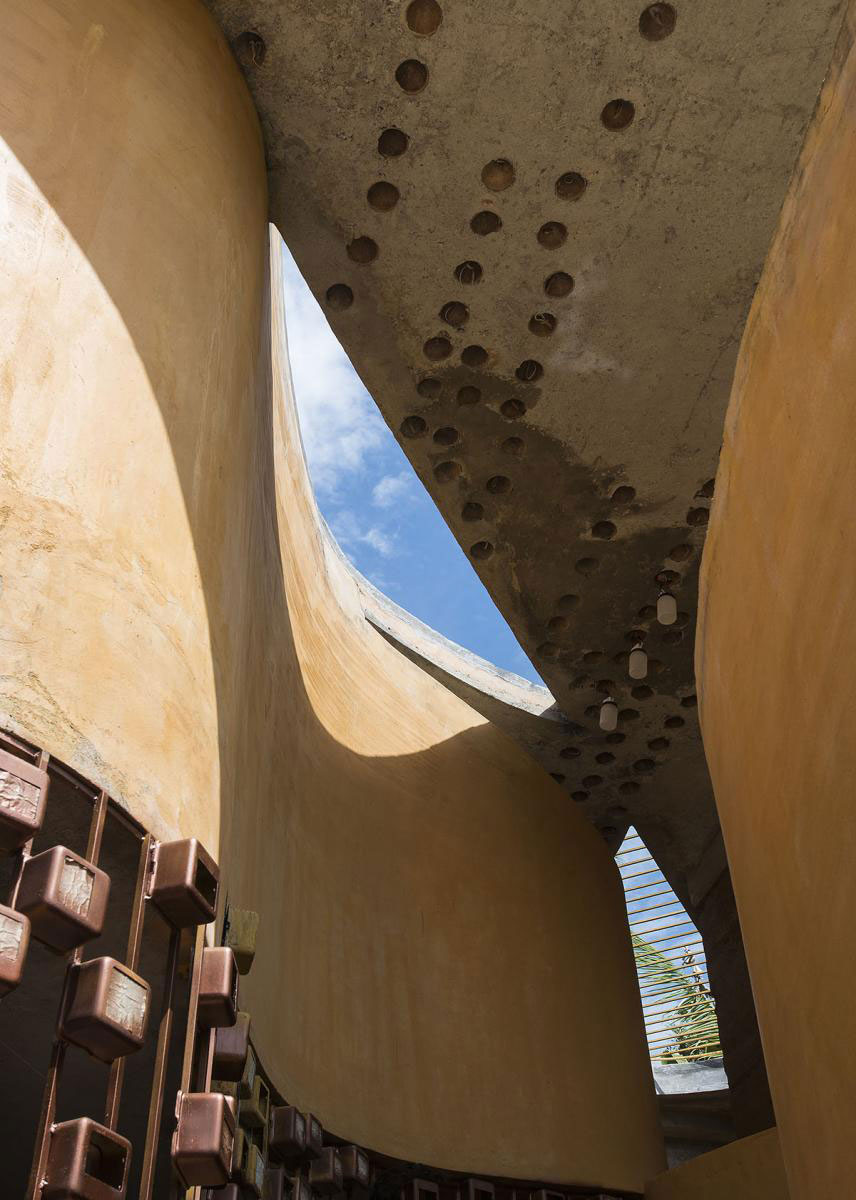

As urban influence spreads in smaller towns, many aspire for homes that often mimic the city with use of glass, concrete, steel and other urban materials that dominate the imagery. By resisting this omnipresent phenomenon and generating an architecture that is modern and yet, responsive to the specific conditions of its context will perhaps enable the towns to find their unique language.
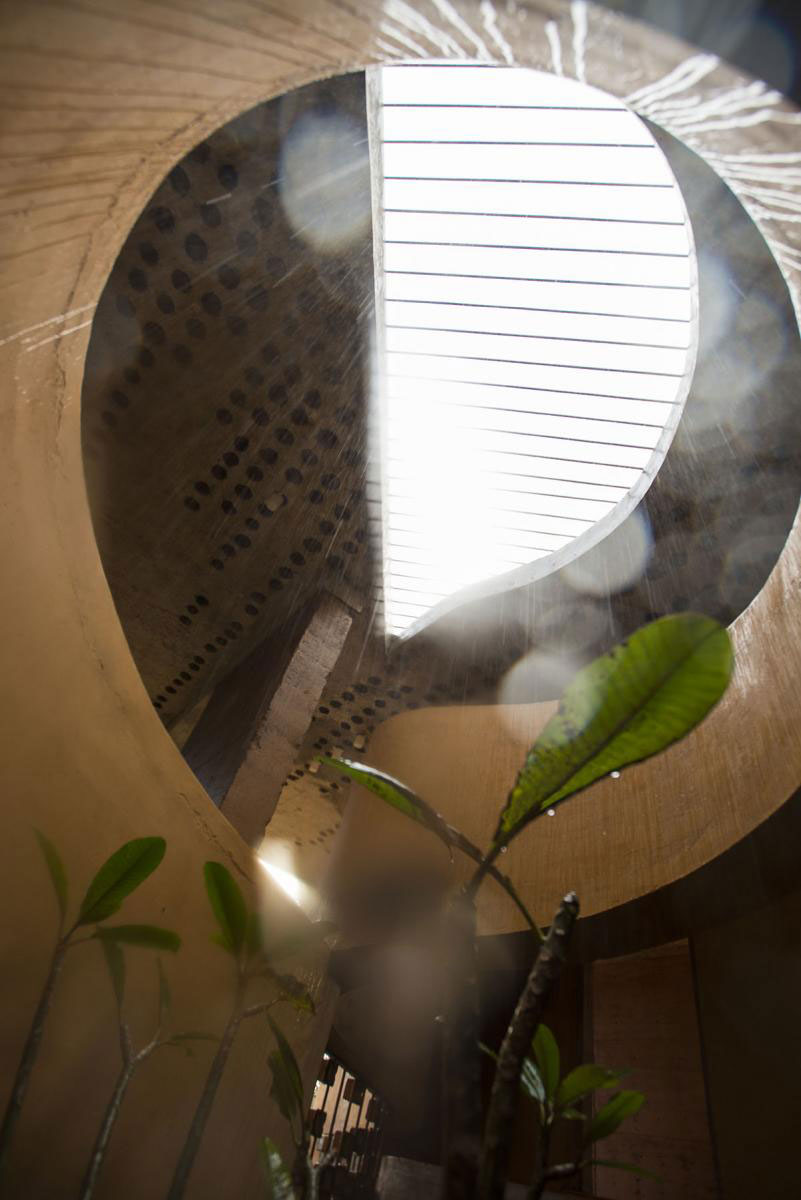

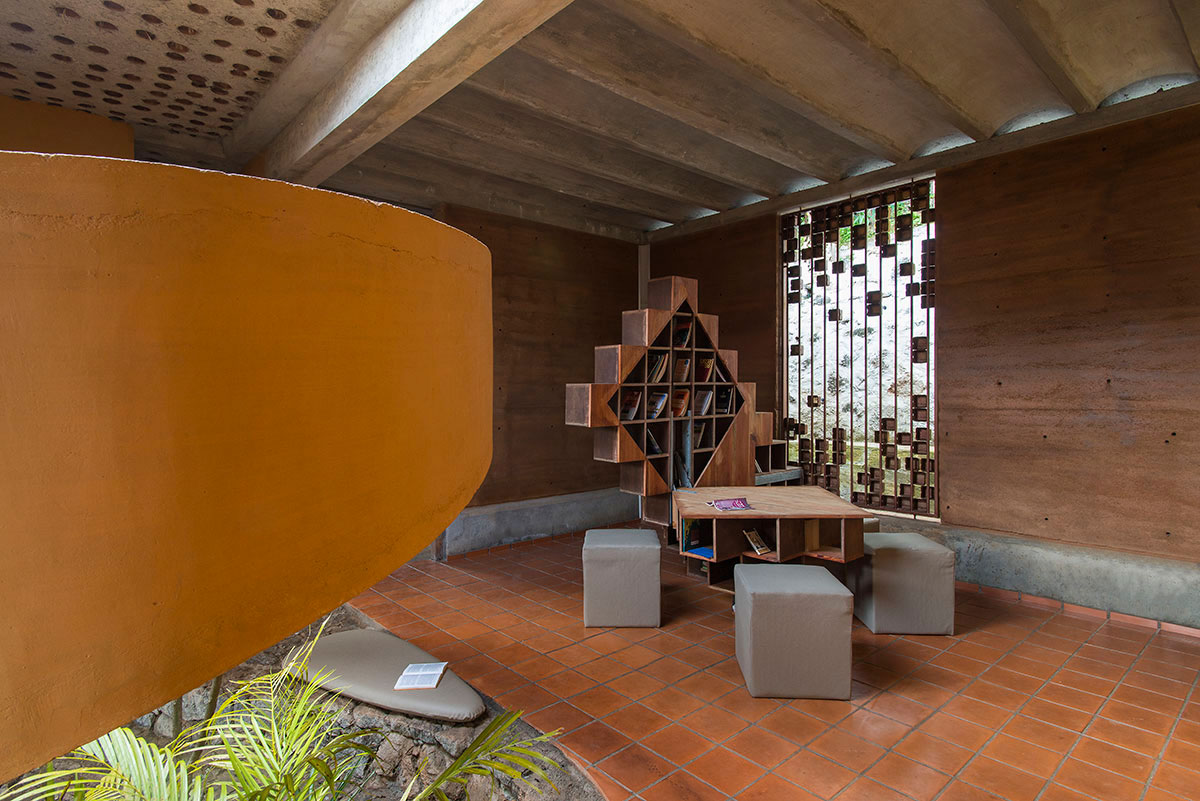
Considering the local nuances and the economic constraints, the materials were responsibly chosen; the walls rose out from the earth that was dug out within the site, the debris from the earlier building is turned to a curvilinear wall that forms the central courtyard and becomes the central focus of the house which is called the Debris Wall and is also the advent of a new technology. Recycled wood is used to create the furniture which derives it form from boxes to store lots of books for the client who is a school teacher. Further green initiatives include a rainwater harvesting and recycling system and a responsive passive air circulation achieved through the careful planning of the courtyard and the facades. The windows protected with meter boxes from a local scrapyard create a mural on the rammed earth walls as the day goes by. Coconut shells used as fillers in the concrete roof give a contemporary touch to the structure. The latter half of the house incorporates Ferrocement shell roofs. Looking at the local context, the project strikes out, humbly maintaining its commitment to the society and the environment.
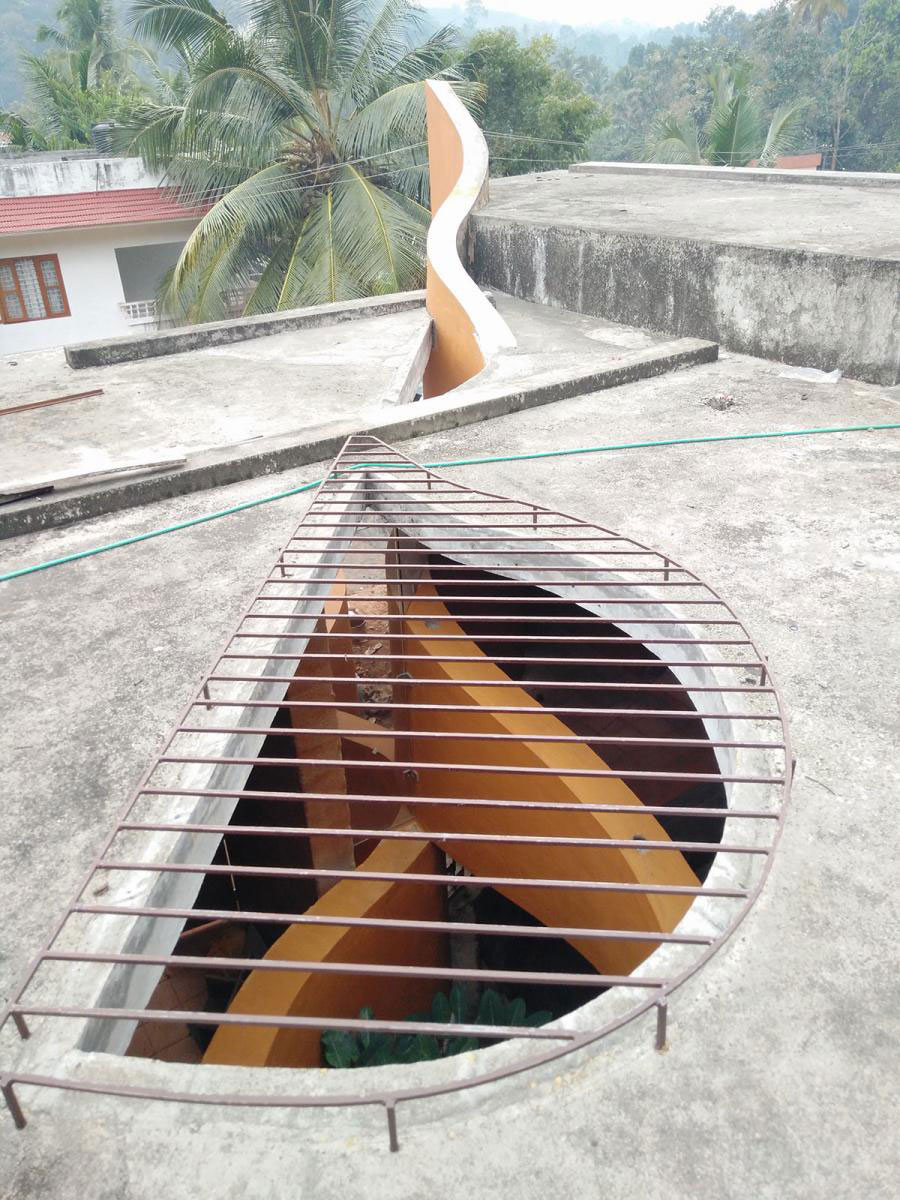
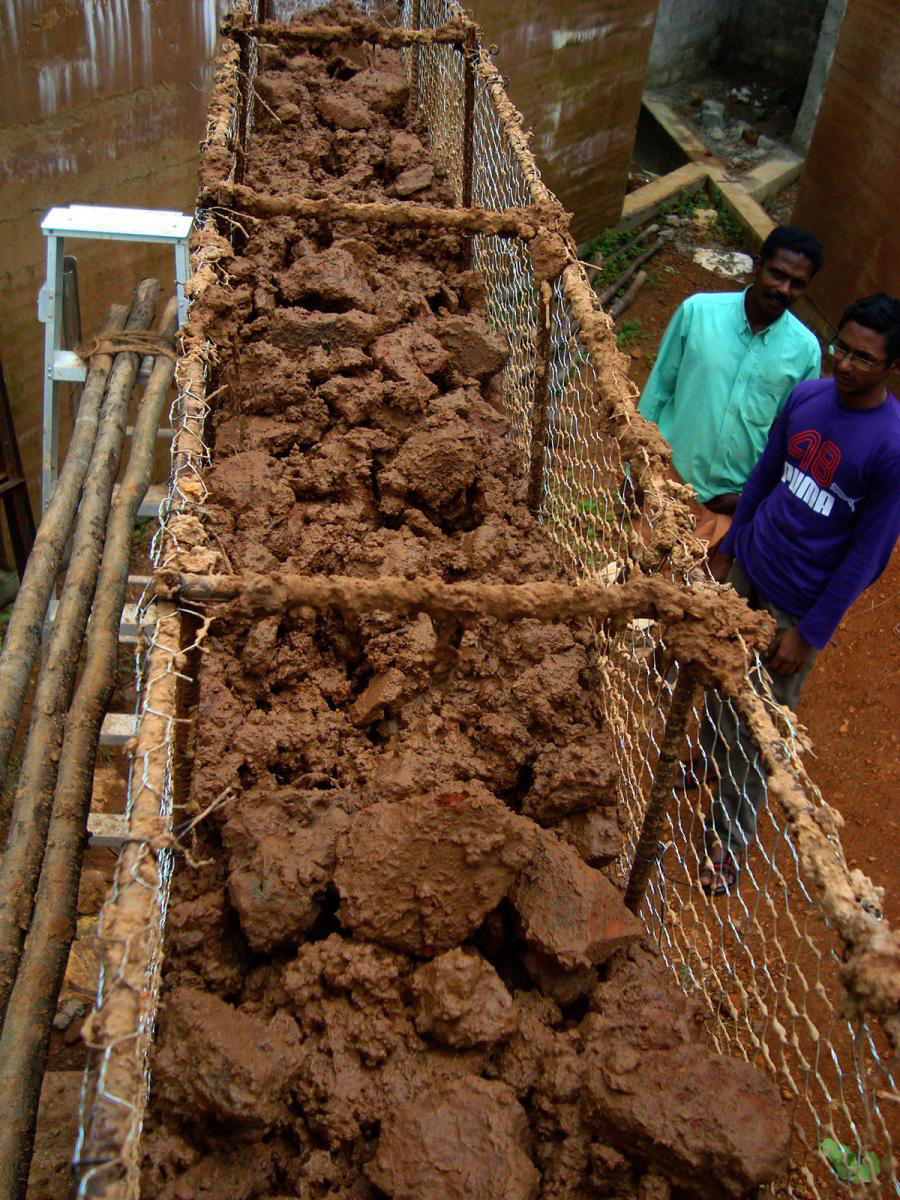

DEBRIS WALL:
Using meshed (22 gauge chicken mesh )casing reinforced with 6mm bars at 2 feet intervals vertically and horizontally, lump sized Debris added with 10% gravel and 5% cement and 5%manufactured sand with water was slightly tamped in 2cm layers to form the set of walls defining the entrance.
INITIAL EMBODIED ENERGY:
Debris walls consume 5 times less energy than a fired brick wall:
Embodied energy of Debris wall = 850 MJ/m3
Country fired brick Wall = 4,501.25 MJ/m3
CARBON FOOTPRINT
Rammed earth walls are polluting 4 times less than country fired brick walls:
Carbon footprint of Rammed earth wall cement = 110.11 Kg of CO2 /m3
Country fired brick wall = 444.12 Kg of CO2 /m3
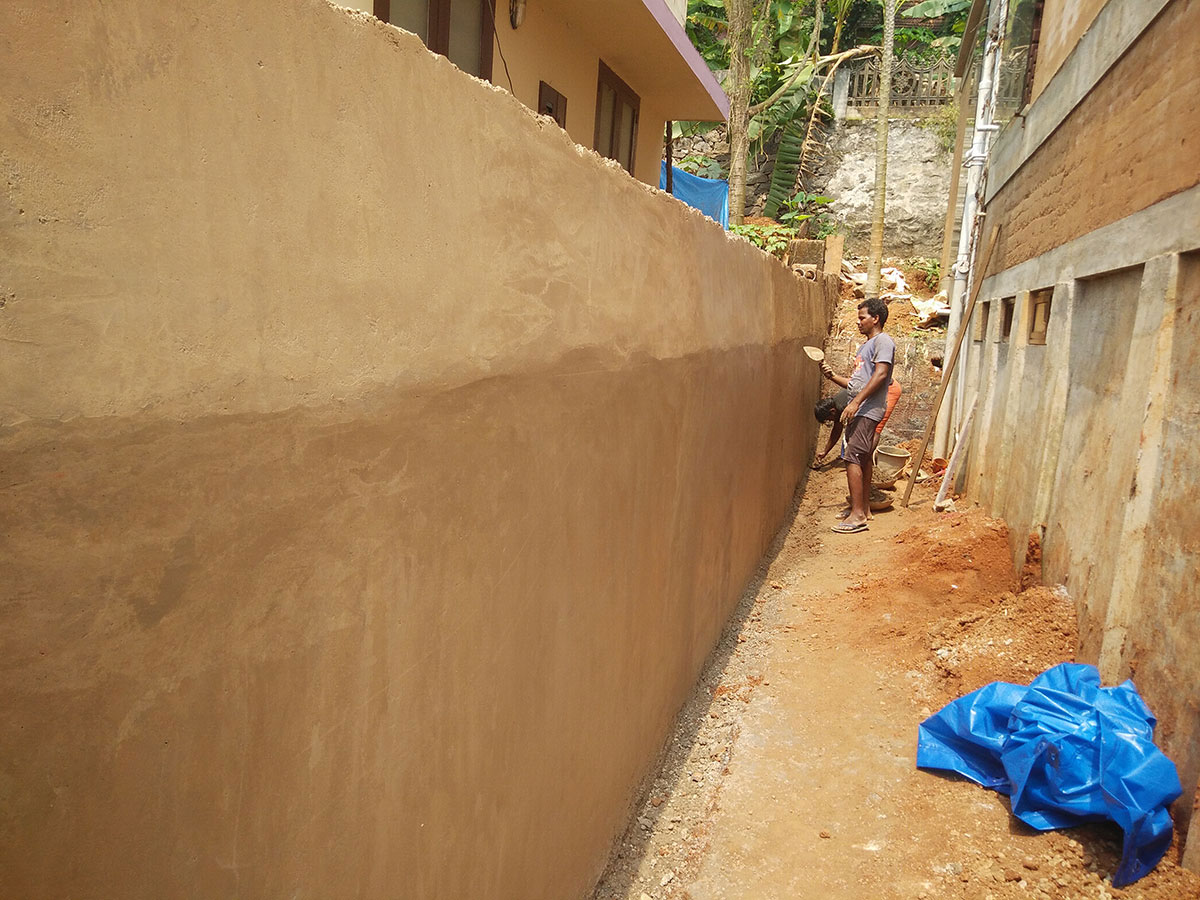
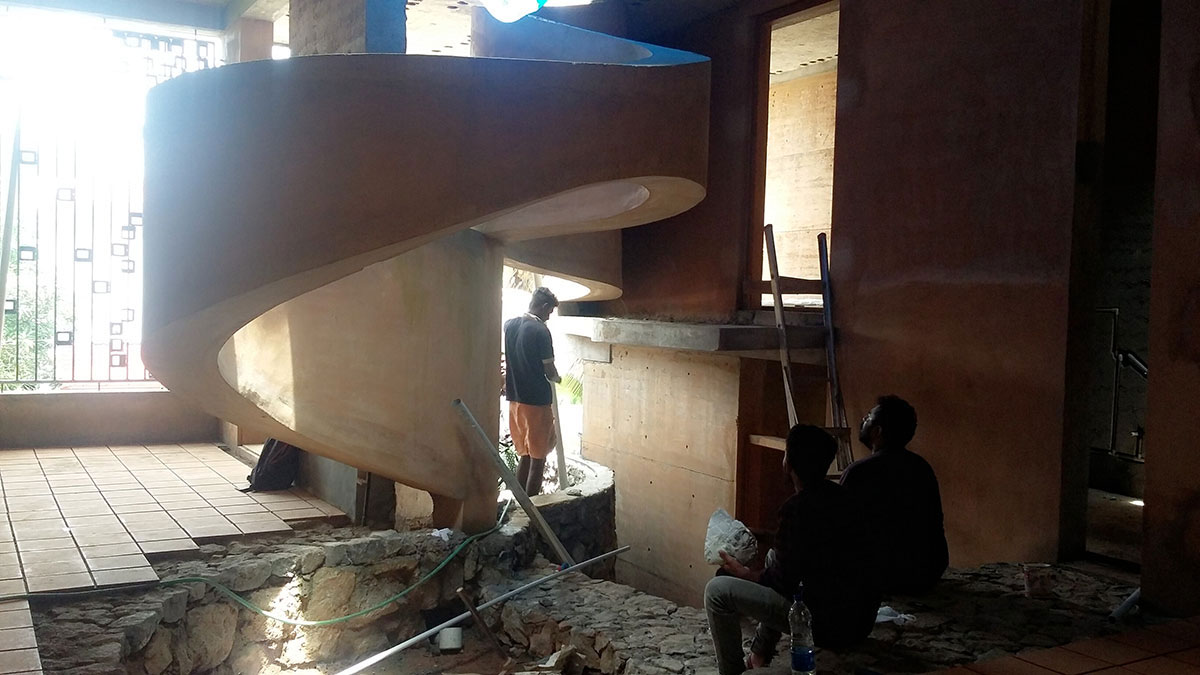
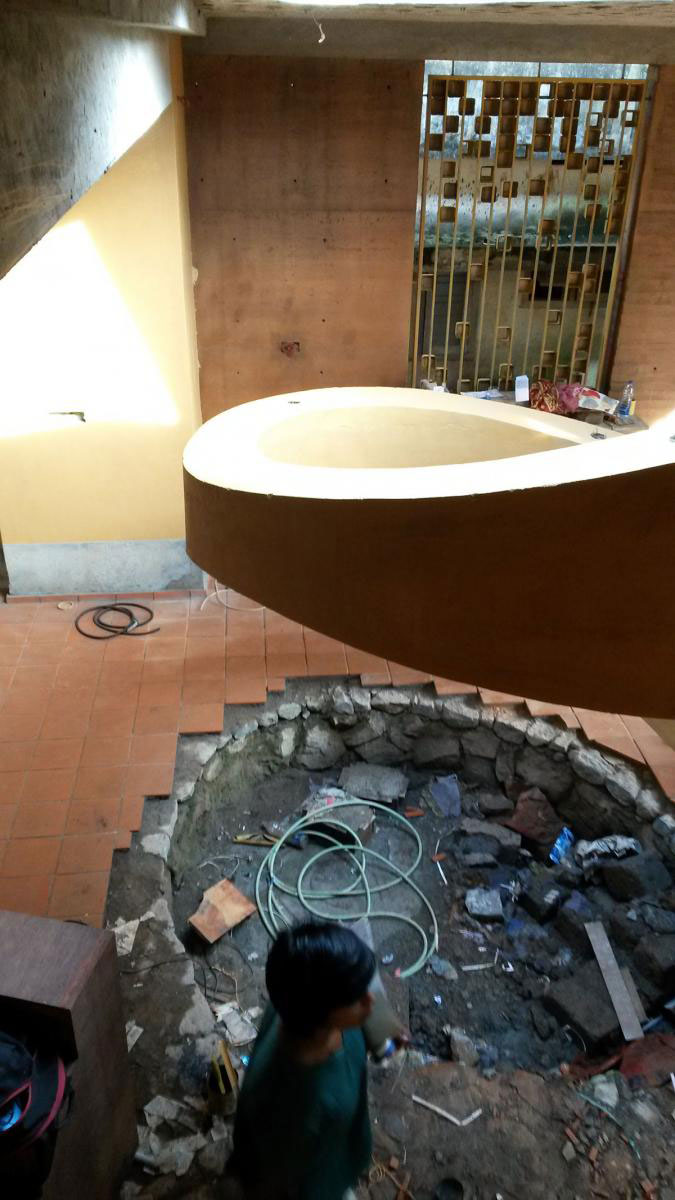
RAMMED EARTH:-
The other walls of the building are made of rammed earth directly from raw earth with 5% cement stabilization. Not only is the technique highly effective but it is also very strong with dry crushing compressive strength ranging from 6mpa-8mpa.
INITIAL EMBODIED ENERGY:
Rammed earth walls consume 4 times less energy than a fired brick wall
Embodied energy of Rammed earth wall = 1,112.36 MJ/m3
Country fired brick wall = 4,501.25 MJ/m3
CARBON FOOTPRINT
Rammed earth walls are polluting 4 times less than country fired brick walls:
Carbon footprint of Rammed earth wall cement = 110.11 Kg of CO2 /m3
Country fired brick wall = 444.12 Kg of CO2 /m3

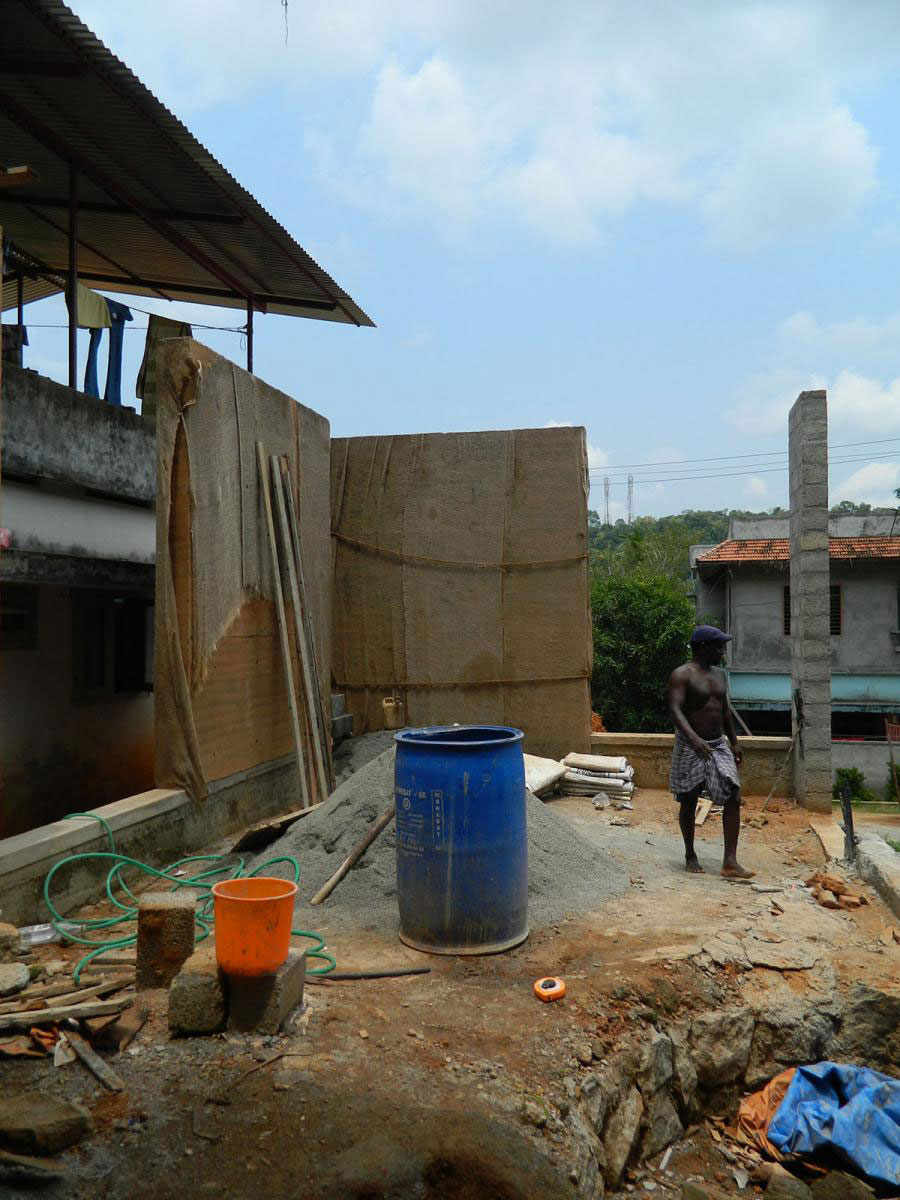

FERROCEMENT SHELLS:
Roof is made of precast ferrocement shells lifted and placed in position manually. These wafer-like structures are steel reinforced arched shells with effective thickness of 1.5cm and they take equal load of respective R.C.C slabs. They effectively reduce the overall cement consumption by 40% and steel consumption by 30%.These replace the R.C.C Slab in roofing as they are as strong as 1200 kg/m2
SPECIAL FEATURES:
Further green initiatives include a rainwater harvesting and recycling system and a responsive passive air circulation achieved through the careful planning of the courtyard and the facades. The windows protected with meter boxes from a local scrapyard create a mural on the rammed earth walls as the day goes by. Coconut shells used as fillers in the concrete roof give a contemporary touch to the structure. The latter half of the house incorporates Ferrocement shell roofs. Looking at the local context, the project strikes out, humbly maintaining its commitment to the society and the environment.
